Note: This post appeared on my old site in 2010; it is reprinted here for posterity.
Call it a retcon. Call it a reboot. Call it a revamp. Just don’t call it a comeback. I asked for your votes a few weeks ago on the writer and/or artist who most “redefined” a character OR TEAM. The main criterion was that the character had to be someone else’s creation, not their own. Between e-mail and blog comments I got about 200 votes. So, without further ado…
Here’s the TOP 10 CHARACTER REBOOTS!
Notable runners up:
- Ed Brubaker/Matt Fraction/David Aja’s Iron Fist (2 votes)
- John Byrne’s Superman: 15 votes (oooh! So close!)
- Grant Morrison’s Batman: 4 votes (a shocker, by the way—I thought it’d be a lot more)
- Keith Giffen and J.M. DeMatteis’s Justice League (1986-89) (3 votes)
- Walt Simonson’s Thor (1983-1986) (12 votes)
10. John Byrne’s She Hulk in The Fantastic Four (1983-1986) (16 votes)
Fantastic Four #232-293
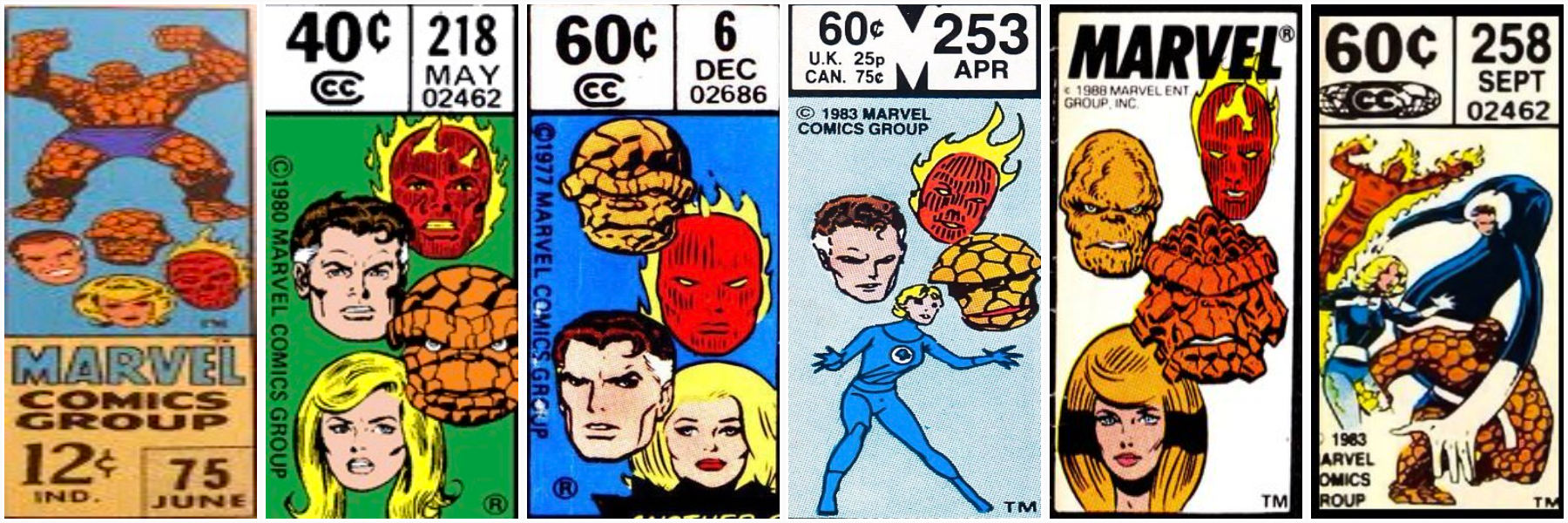
Ejecting Thing was a bold step. But even bolder was introducing cheesecake pin-up gal She Hulk as a feminist who wasn’t afraid to sunbathe topless on the Baxter Building. She Hulk actually became interesting under Byrne’s run. It’s possible that without it, she would have disappeared from the Marvel Universe forever. Like Teen Hulk. But Byrne also got votes for his work with the F4 in general, turning Sue into a woman (she changed her name from Invisible Girl to Invisible Woman); forcing Reed to come to terms with the indirect consequences of his interdimensional meddling by bringing him to court in an alien world; having Johnny date a future herald of Galacus; and making Superman-with-a-mohawk rip-off Gladiator, of the Shi’ar Empire, the foe in issue #250. Perhaps the greatest fight sequence ever to grace The World’s Greatest Comic Magazine.
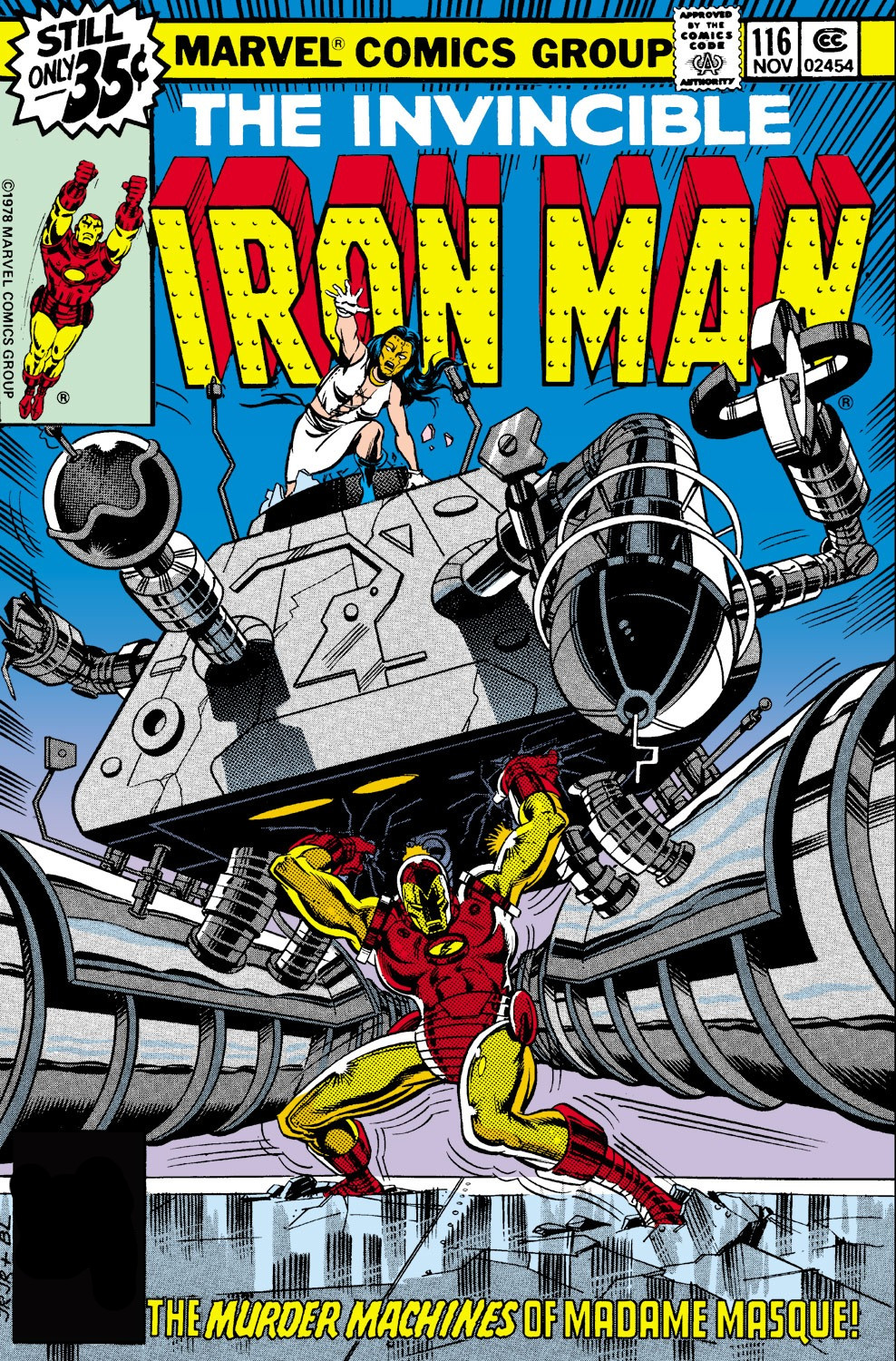
9. Bob Layton and David Michelinie’s Iron Man (1978-1989) (17 votes)
Iron Man #116-157, 215-250
The first run is better than the second, but I think I like them both better than even Matt Fraction’s terrific run. Why? Four words: Demon in a bottle. Why else? James Rhodes, Justin Hammer, Stealth Armor, Ant Man, Iron Man versus Hulk, Doctor Doom, the Mandroids, War Machine, Machine Man . . . That’s enough, innit? This run took a bottom-selling D-list title and made it a must read.
8. Marv Wolfman and George Perez’s Dick Grayson (1980-1986) (19 votes (all votes for Wolfman/Perez Teen Titans were counted here))
Run: The New Teen Titans 1-50; New Teen Titans (oversized, glossy book) 1-5.

It always confused me back when I was a lad that a guy named “Marv” worked for D.C. But I’m glad he did. The Teen Titans of the Silver Age were a group of obvious spin-offs and sidekicks, led by their poster-child, Robin. The reboot included a few original characters (Raven, Starfire, Cyborg), it also took on some of the most cliché characters of the DCU. It was intended to be D.C.’s response to Claremont’s Uncanny X-Men reboot (and the rumor is that Claremont was offered the project in 1986, right about the time Wolfman was fired from D.C.).
Throughout the course of the book, Wolfman and Perez added depth to these characters—Wally West struggled with becoming a man, and eventually became Kid Flash. Wonder Girl didn’t struggle against her role as a hero and junior Goddess, but she did struggle with having powers and loving a “normal” guy. Changeling/Beast Boy rebelled against his own dark past and Doom Patrol roots, which, like his teammate Raven, kept coming back to haunt him. But nobody grew and changed more than Robin. Over the course of the series, we saw Dick Grayson go from boy to man, eventually turning into Nightwing. More importantly, we see how the process of maturing as part of a team makes him a better leader than his mentor, Batman, which has had a clear effect on his relationship with the new Robin in Grant Morrison’s current title. You won’t go wrong scooping up reprints of these books—I treasure my original, single issues, and have read (and re-read) them
with my kids over and over. The book is also the inspiration for Teen Titans Go!, one of the best supercartoon series of all time.
7. Geoff Johns’ Green Lantern (2004) (29 votes)
Run: Green Lantern: Rebirth #1-6
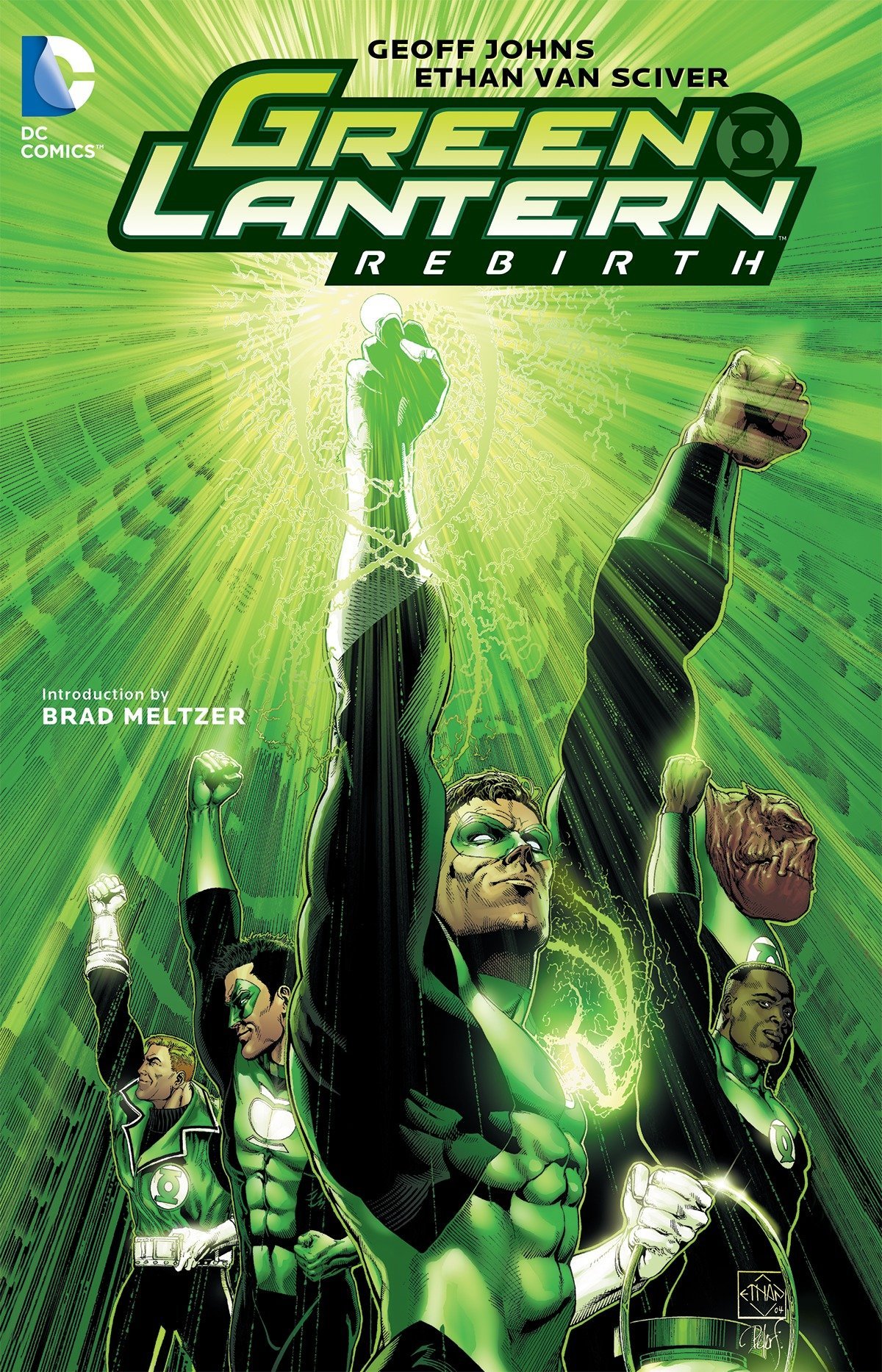
Other than Frank Miller’s portrayal of GL as a patsy in All Star Batman, I have never liked—or even made it all the way through—a Green Lantern story. This run made me care about him for the first time. It also wove-in existing legend without leaving new readers (like me) in the dark. A very good example of renewing old history for the benefit of comic-nerds by creating a story that is full of lore and arcane facts, but still new-user-friendly.
6. Garth Ennis’ Punisher (2001-2008) (30 votes)
Run: Just get the Punisher Omnibus volumes. There’s three different series and several one-shots all told.
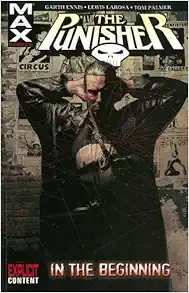
Let’s get one thing straight: Other than the two-issue Frank Miller “Angel Dust” story in the pages of Daredevil, I never liked Punisher. He was basically a really pissed off Batman who used guns and wasn’t nearly as smart. Enter Garth Ennis’s relaunch with (one of my least favorite artists) Steve Dillon on a brilliant maxi-series called “Welcome Back, Frank,” that attempted to explain why there had been no Punisher comics for so long. The team went on to the darkly comical Marvel Knights series, which was solid as well, during which Dillon left the book. At was at that time that Ennis moved the book to Punisher MAX, and the true redefinition began. He took a gritty, dark, cinematic approach to the character, which focused more on the evil-doers than the vigilante himself. Each story arc got worse, too, moving from drugs to prostitution to terrorism to desecration of Frank Castles’ family gravesite, and each villain grew increasingly evil. We thus gained an understanding of Punisher’s motivation, and a sympathy for his hopeless, antisocial, violent world view. These MAX books have been collected in a series of oversized volumes, and even though they’re a little more pricey than the paperbacks, I highly recommend them. The artwork, by folks like Leandro Fernandez, Howard Chaykin, Richard Corben, and Goran Parlov, is brilliantly reproduced, and the larger size gives the book an even greater sense of drama. This is probably one of my favorite series of all time.
5. Ed Brubaker’s Captain America (2005-2010) (Votes: 33 (for either Cap, Bucky, or Winter Soldier)
Run: Captain America 1-50, Captain America 600.

Whether it is with Steve Epting, Luke Ross, or even Butch Guice, Brubaker’s vision of the flag-waving hero represents the first cynical version of Marvel’s most hopeful hero. Talk about change: In the first story arc, Brubaker killed off Cap’s greatest foe, the Red Skull, leaving Cap a little rudderless. Then, of course, he killed Steve Rogers and replaced him with Bucky Barnes, after reinventing the “dead” character as an anti-American agent (Winter Soldier). So clearly this was a complete reinvention of the hero, down to the molecular level! Not only has Brubaker’s run redefined the “look” of the series from a star-spangled herofest into a dark, noir-y spy book, but Brubaker’s intricate plotting is evident from issue one. Careful re-readers, with the benefit of hindsight, can already tell what the future will hold for Steve Rogers. This was an absolutely brilliant reinvention of a character who wasn’t dark enough for Marvel’s pseudo-realistic universe of the 2000s.
4. Frank Miller, with Klaus Janson and David Mazzucchelli,-Daredevil (1979-1983; 1985-86) (51 votes)
Run: Daredevil #163-191, 227-233.

Miller’s run begins with a new “look”—something bridged the gap between the sketchy work of Gene Colan (the previous artist), whose characters often seem squat or low to the ground, but with more shadow and movement. Miller’s pencils are like dances, with the character’s movement from panel-to-panel sketched with ballet-like detail. Klaus Janson, a brilliant artist on his own, played Dave Grohl to Miller’s Kurt Cobain, allowing Miller to define the look of the book but punctuating the sketches with powerful, bold inks. Like most iconic runs, Miller’s Daredevil was marked as much by the supporting cast as by the titular star. Elektra. The Hand. Stick and Stone. The use of Foggy as the perfect foil for Matt Murdock: A man afraid of everything, but highly competent behind a desk. The repurposing of Bullseye from a pretty standard, one-note enemy to a driven psychopath determined to rise up the hierarchy of the underworld. And, of course, the complete hijack of Kingpin from a big fat strong guy who could fight Spider-Man to a coldly calculating underworld leader with eyes everywhere. Oh, and Turk, of course. Turk, the thug who gets beat up in just about every issue, bounced (literally) off of Daredevil’s hard-boiled, no-nonsense attitude to bring a sense of humor to the darkest comic of its time, but also to show DD’s human side. DD clearly sympathizes with the minor tough on some level: Turk is an underdog, just as Murdock is really a minor player in Marvel’s “big” New York superhero universe. Miller also added some depth to Murdock in the classic “Guts” story, in which DD watches over an adventure starring Foggy Nelson, letting his best friend feel powerful while protecting him from the shadows. It was stories like this that made us feel like we knew Matt Murdock—he wasn’t just some cipher who had to put on a costume to be interesting. Then, after his history-making run, Miller returned to completely break Daredevil down into nothing, dissolving his secret identity and reducing the character into a bit player in his own book. The second Miller run plants the seeds for Brian Michael Bendis’ run, in which the lines between hero and secret identity break down completely.
Frank Miller’s Daredevil transformed the comic book world, and after it, nothing was the same. There’s a good reason he’s got two titles in this top 10 list: He may be a pain the ass, but he’s a genius.
3. Alan Moore’s Swamp Thing (1983-1987) (53 votes)
Run: Swamp Thing 20-58, 60-61, 63-64.
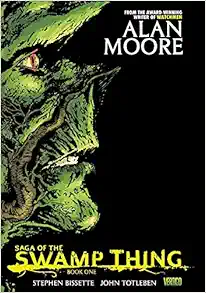
I recently did a long piece about Moore’s reimagining of this classic Len Wein/Bernie Wrightson character. The work wasn’t just good for Swamp Thing—it was good for comics in general. Moore and a series of artists including Veitch, Bissette and Totleben revolutionized horror comics by taking them away from shock/TnA and revolutionized the anti-hero by making a plant . . . Human. Through this series, Moore retold the origin (but this time, instead of a human becoming a plant, we saw a plant becoming a human), and took fringe characters like Phantom Stranger, Deadman, and Demon and made them relevant—and, more than that, gave them unique personalities and depth. He also forced us to reconsider established heroes like the JLA and Batman (who is portrayed as a vicious bully when positioned against the sympathetic, heart-broken, but raging Swamp Thing). Yeah, this entry is to give credit to Moore’s vision of Swamp Thing himself, but as everyone from Jerry Seinfeld to Kermit the Frog knows, a star is only as good as his supporting cast.
2. Frank Miller’s Batman (1986-87) (60 votes.)
Run: The Dark Knight Returns (inks by Klaus Janson); Batman 404-407 (“Year One”) (with art by David Mazzucchelli); Batman: The Dark Knight Strikes Again.

It won’t be clear for a long time—perhaps ever—if the Batman of Miller’s Dark Knight is the Batman of the DCU, but it does seem apparent that Batman: Year One is in the “regular” continuity, so Miller’s Batman qualifies for this list. Moreover, his vision and revision of the hero received a staggering amount of votes—nearly everyone gave credit where credit is due—to the man made the Batman’s peculiar form of psychosis make sense. These three stories have been collected and recollected at least a dozen times over. If you don’t own them, you should be able to get them pretty cheap on Amazon. All-Star Batman is pretty damn good, too, but it does not appear to be part of the regular DCU so, like Marvel’s “Ultimate” universe, it’s disqualified under my kind of random rules.
Frank Miller’s origin story became the one every movie borrowed from, and his futuristic Dark Knight story didn’t just reboot Batman–it rebooted all of comics, turning them overtly into an adult-driven for the first time.
1. Chris Claremont’s Uncanny X-Men/Wolverine (1975-1985) (76 votes)
Run: Uncanny X-Men 94-192; Wolverine 1-4 (with Frank Miller)

There were many votes for Claremont’s revisions of particular members of the team. The most common vote was Wolverine, but Cyclops got two votes for turning him from milksop to strategist, and Jean Grey got 5 votes for, well, dying and all. Quite a few people mentioned Claremont’s runs with specific artists (Byrne/Cockrum/Romita, Jr.). But I’m collapsing it all together into this one category. X-Men was perhaps the defining comic book of the early 1980s, and in it Claremont reinvented tired old characters like Cyclops and Xavier; turned Wolverine from a kinda silly Hulkbuster into a samurai/ninja/Marvel-money-making-machine; and turned Jean Grey into Phoenix, one of the most transformative reinventions in comic book history. And then he killed her.
If you’re going to make a list of iconic recreations of classic characters, this has to be number one. Period.
